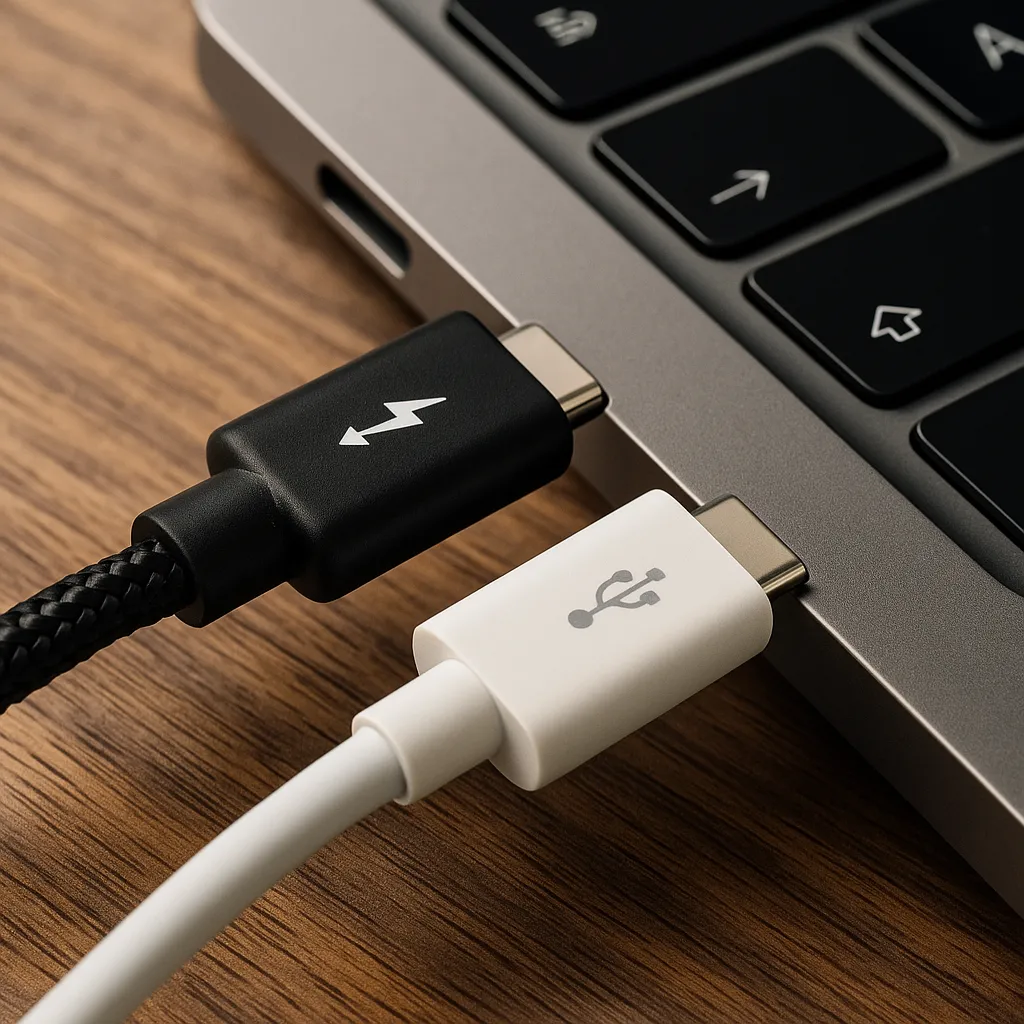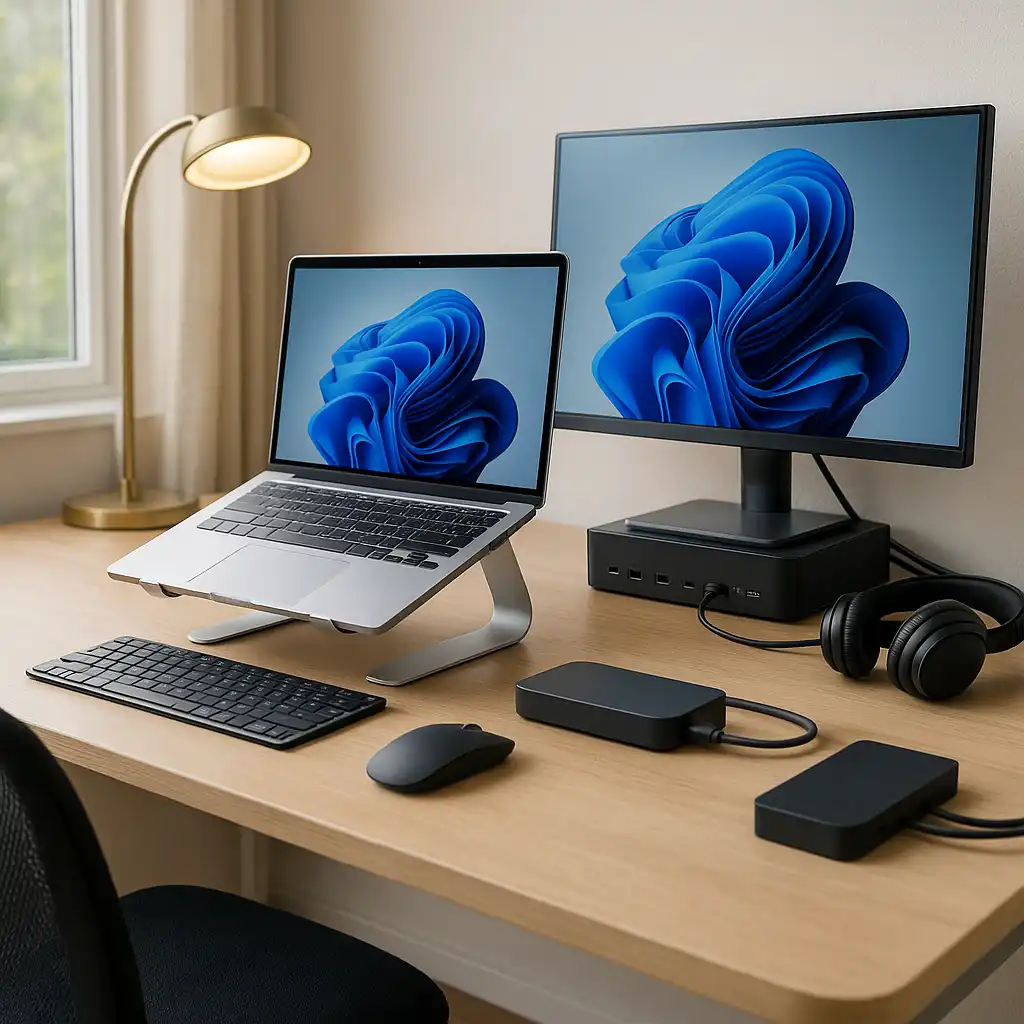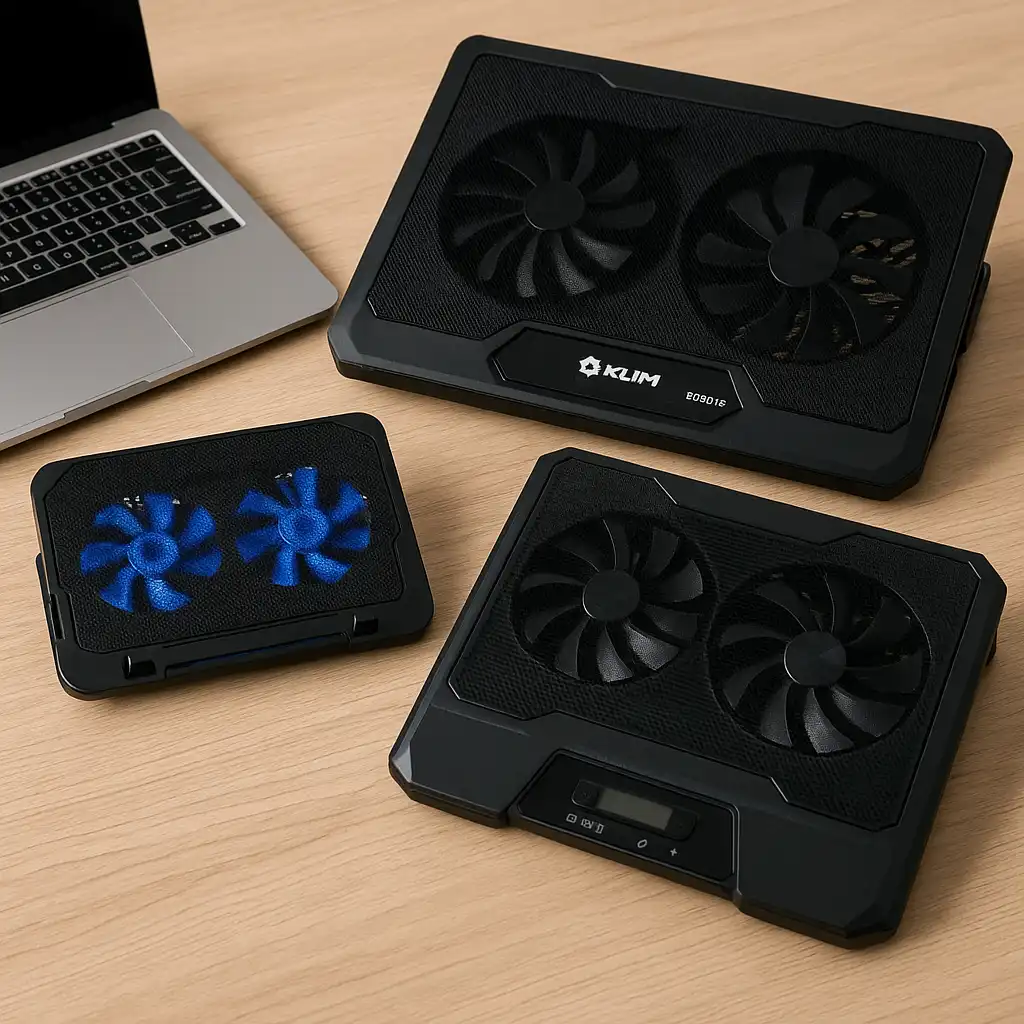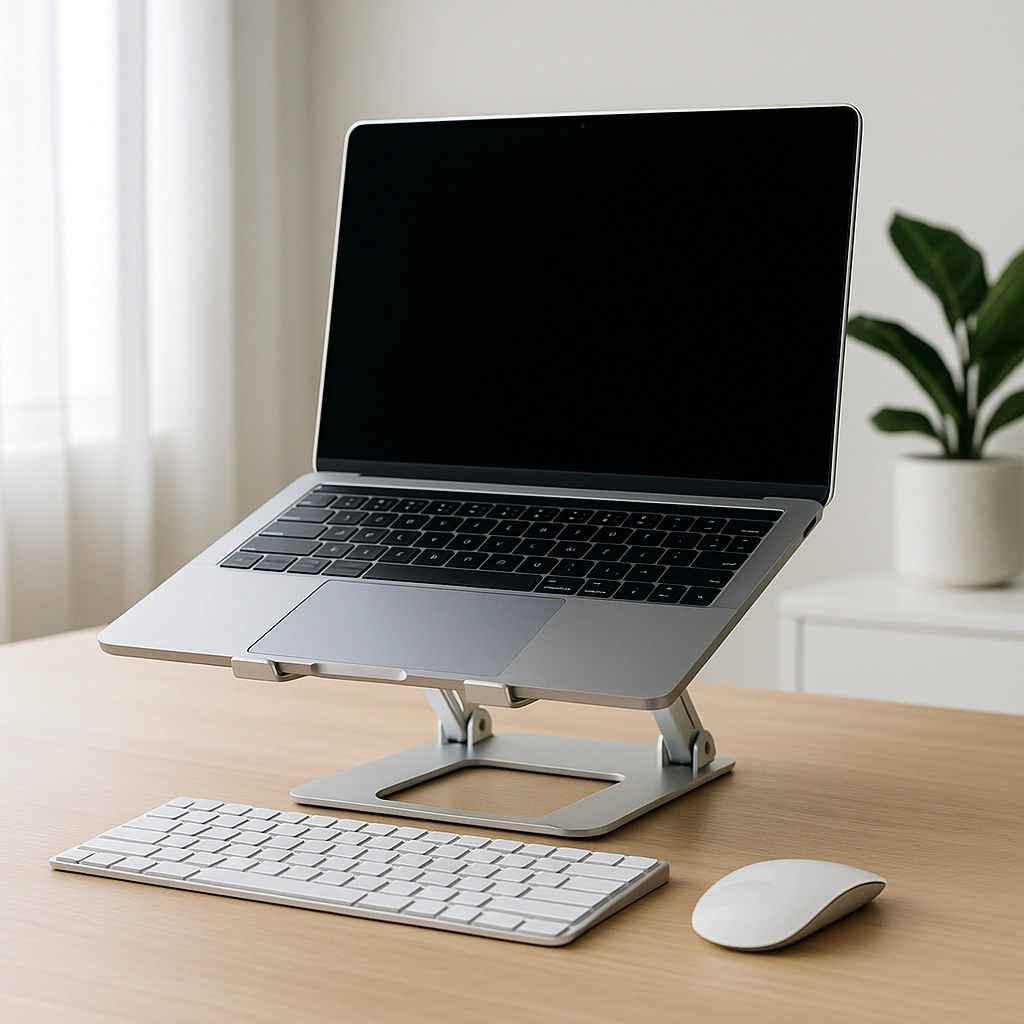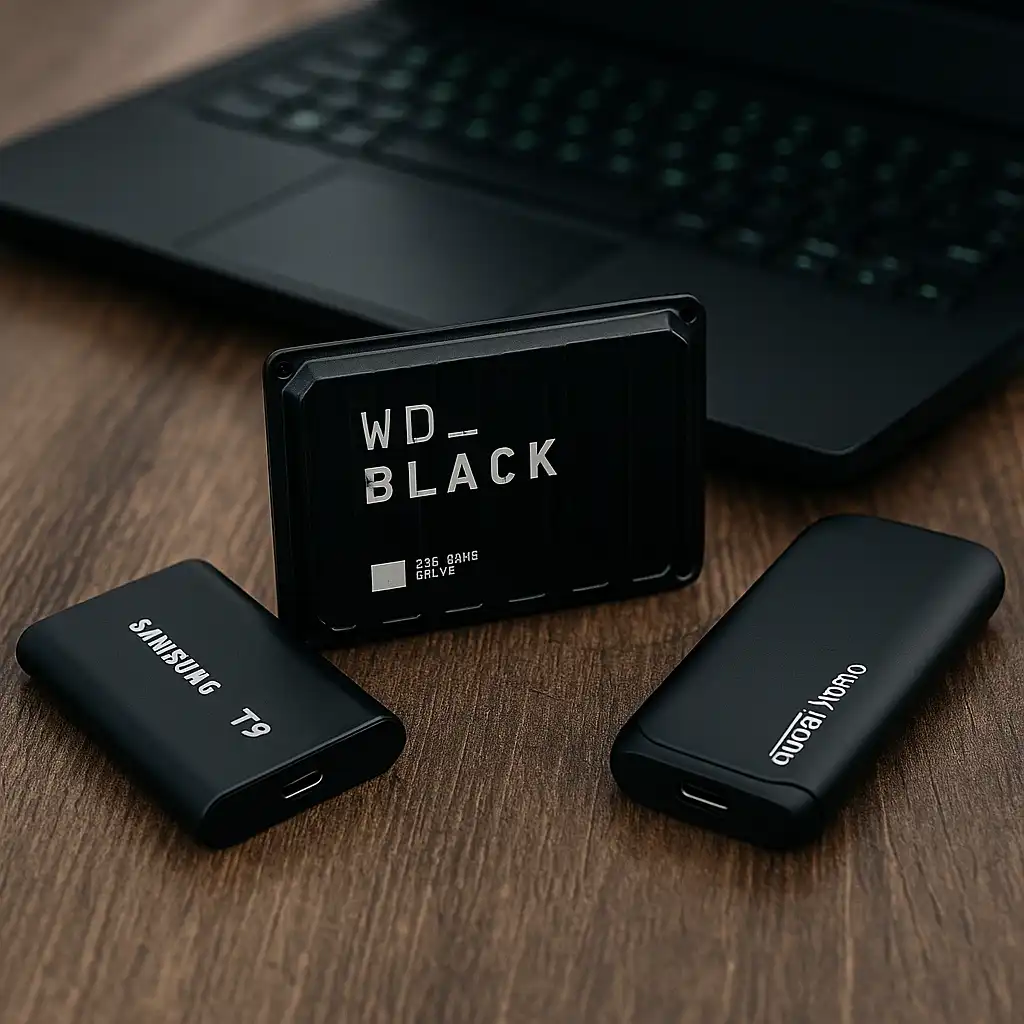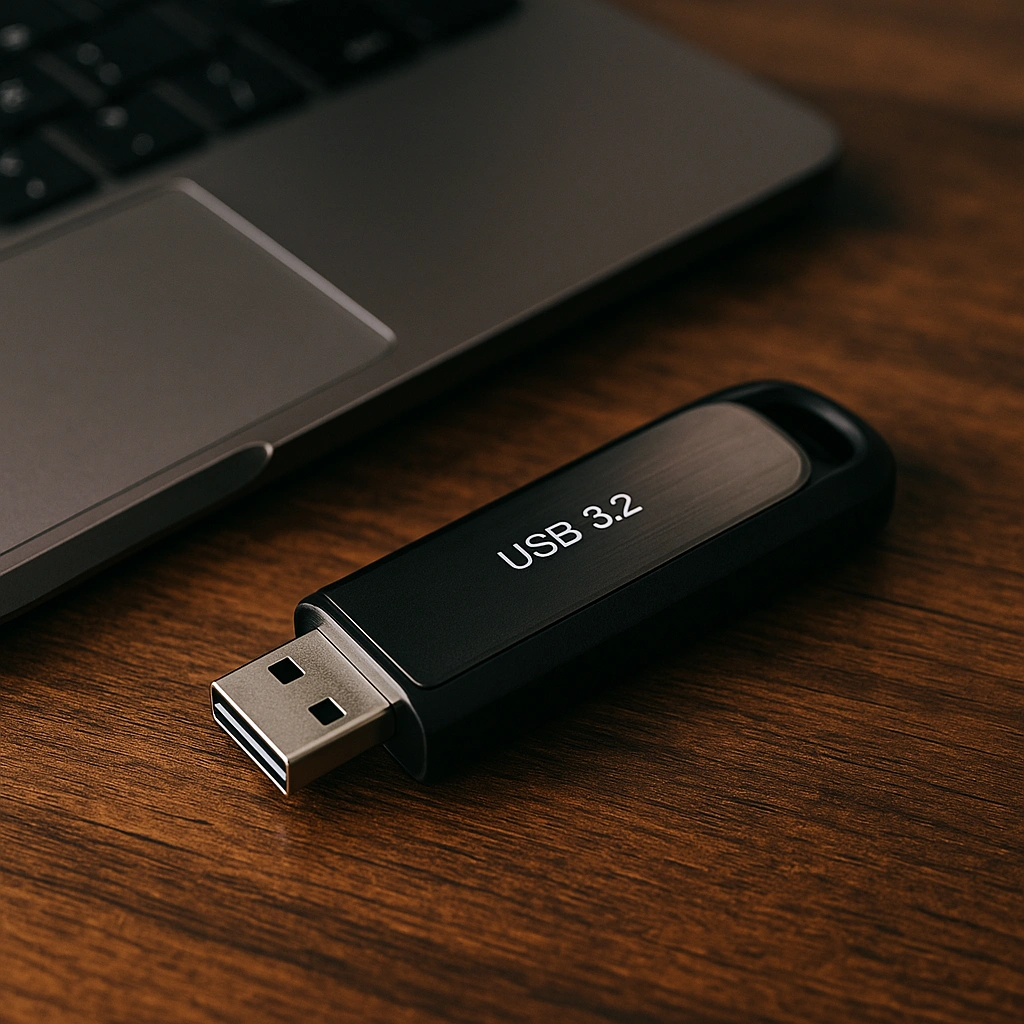Is USB-C and Thunderbolt the Same? Here’s What You Need to Know
Disclosure: This post contains affiliate links. LaptopVoyager.com participates in the Amazon Associates Program and may earn commissions on qualifying purchases, at no extra cost to you.
As more laptops adopt USB-C ports, it’s easy to assume they all do the same thing. But there’s an important difference between USB-C and Thunderbolt—and knowing that difference can save you time, money, and a lot of headaches when connecting accessories.
Let’s break down what sets them apart and how it impacts real-world use.
Same Port, Different Capabilities
USB-C and Thunderbolt may look the same, but they’re not identical under the hood. USB-C is the shape of the port. Thunderbolt is a high-speed data and video technology that can run through a USB-C connector—if the device supports it.
Here’s how they stack up:
- USB-C (USB 3.2 Gen 2): Up to 10Gbps speed, up to 100W charging, sometimes video output
- Thunderbolt 3 & 4: Up to 40Gbps, dual 4K display support, daisy-chaining, and full USB-C compatibility
So while every Thunderbolt port supports USB-C, not every USB-C port supports Thunderbolt.
Why It Matters for Everyday Use
The difference becomes obvious when you’re connecting gear like docks, displays, or external drives. Thunderbolt drives, for example, won’t work properly on laptops that only support standard USB-C.
Many users have reported issues like limited speed or failed connections—often because their laptops didn’t support Thunderbolt. This comes up a lot with newer Windows machines that include USB-C ports but not Thunderbolt support.
MacBooks and premium Windows laptops often have Thunderbolt built-in. More affordable models typically stick with basic USB-C, even if the ports look the same.
Check Your Ports Before Buying Accessories
One frustrating part is that manufacturers don’t always label ports clearly. Some laptops include a tiny lightning bolt icon to indicate Thunderbolt. Others don’t give any visual clues at all.
According to user reviews and official specs, your best bet is to check the device’s product page or tech sheet. Look specifically for terms like “Thunderbolt 3,” “Thunderbolt 4,” or just “USB-C with DisplayPort Alt Mode.”
Also keep in mind: just because a laptop has USB4 doesn’t mean it supports Thunderbolt features. Always double-check before making a purchase.
Do You Need Thunderbolt or Is USB-C Enough?
Thunderbolt is great if you:
- Transfer huge video files
- Use multiple monitors through one port
- Need fast external storage or an eGPU
USB-C, on the other hand, works fine for:
- Charging and basic data transfer
- Single external displays
- Budget-friendly docks and accessories
If you’re mostly doing browsing, emails, or light work, USB-C will get the job done. But if you’re building a full desktop setup or working with high-res media, Thunderbolt can make your life much easier.
Conclusion
USB-C and Thunderbolt may look the same, but they serve different purposes. USB-C is the connector; Thunderbolt adds high-speed power and versatility—if your device supports it.
Before buying cables, docks, or drives, check your laptop’s specs to see what your ports can actually handle. It’s a simple step that can save you from compatibility problems down the road.

